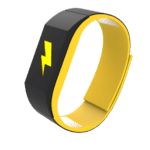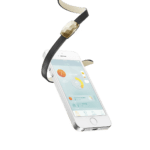Widely hailed as the next digital revolution, the “Internet of Things” means that many objects are now being wirelessly connected to the Internet and to each other. You can tell when a trend really starts to take off when it stretches the limits of the believable – the expected, such as connected cars, and the unusual, such as the connected dairy cows we found in Switzerland and the connected sheep in Norway.
The wild side of the Internet of Things
Here are some examples of the wilder side of the emerging IoT – some of which are so crazy they just might make sense:
A bike helmet that can talk to cars: If you are going to the Consumer Electronics Show in Las Vegas next week you might want to check this one out: Volvo, sports gear manufacturer POC and Ericsson will be debuting a connected bike helmet that alerts both the wearer and car drivers of an imminent collision. The helmet connects to the Internet via a smartphone app for bicyclists, which will then share the cyclist’s position through the Volvo cloud to the car. If a collision is imminent, the driver will see a display alert and the cyclist will be warned via a helmet-mounted alert light.
 Connected toothbrush: Kolibree is introducing an electric toothbrush that connects with a smartphone app to track how long and how well you brush. And not just you — Kolibree means for the whole family to get in on the dental hygiene fun — that is assuming that dental hygiene and fun aren’t a contradiction in terms, especially for most kids. Part of Kolibree’s pitch is that it makes brushing fun for children. The toothbrush has three-dimensional sensors in the brush to tell if they are brushing with the right moves and then the kids can see real-time feedback on the connected smartphone – and we know they really like smartphones. Now I have to wonder if it comes with a feature that yells: “Did you brush your teeth yet?” again and again until the kids magically run for their toothbrushes.
Connected toothbrush: Kolibree is introducing an electric toothbrush that connects with a smartphone app to track how long and how well you brush. And not just you — Kolibree means for the whole family to get in on the dental hygiene fun — that is assuming that dental hygiene and fun aren’t a contradiction in terms, especially for most kids. Part of Kolibree’s pitch is that it makes brushing fun for children. The toothbrush has three-dimensional sensors in the brush to tell if they are brushing with the right moves and then the kids can see real-time feedback on the connected smartphone – and we know they really like smartphones. Now I have to wonder if it comes with a feature that yells: “Did you brush your teeth yet?” again and again until the kids magically run for their toothbrushes.
Bomb-sniffing sewer sensors: You read that right, and they’re real: Two European Union-funded security projects have created high-tech sensors that can detect when chemicals used in making a homemade bomb are in waste water, and then automatically notify authorities using a wireless alerting system. The system has been tested at the Swedish Defense Research Agency, and while it is still in the prototype stage, it has reportedly attracted attention from other government agencies including the U.S. Department of Homeland Security.
 A shock behavior-modifying wristband: Pavlok wants to help shock you into better behavior. That’s right, it is what you think it is, a wristband that shocks you when you engage in a bad habit. Initially, the company is launching the band with three associated apps: The “wake up” app helps you get out of bed on time, first with a vibration then with a shock; “productive” tracks your online activity and shocks you if you get distracted; and “fit” tracks your exercise, and if you don’t meet your goals … well you know. Actually it’s not all shocking. You can also design other consequences, including paying a fine or losing access to your phone. The project raised $250,000 on Indiegogo – five times its goal. The device is due to premier to the general public in 2015.
A shock behavior-modifying wristband: Pavlok wants to help shock you into better behavior. That’s right, it is what you think it is, a wristband that shocks you when you engage in a bad habit. Initially, the company is launching the band with three associated apps: The “wake up” app helps you get out of bed on time, first with a vibration then with a shock; “productive” tracks your online activity and shocks you if you get distracted; and “fit” tracks your exercise, and if you don’t meet your goals … well you know. Actually it’s not all shocking. You can also design other consequences, including paying a fine or losing access to your phone. The project raised $250,000 on Indiegogo – five times its goal. The device is due to premier to the general public in 2015.
 Sun-sensitive bracelet: June, a sparkly bit of jewelry from the French company Netatmo (also known for its smart meter), can measure your exposure to the sun, talk to your smartphone, tell you the right level of SPF sunscreen to put on, whether to wear a hat, or if it’s time to move into the shade. Actually, June is probably the bossiest piece of jewelry you’ll ever buy, but at least it doesn’t shock you.
Sun-sensitive bracelet: June, a sparkly bit of jewelry from the French company Netatmo (also known for its smart meter), can measure your exposure to the sun, talk to your smartphone, tell you the right level of SPF sunscreen to put on, whether to wear a hat, or if it’s time to move into the shade. Actually, June is probably the bossiest piece of jewelry you’ll ever buy, but at least it doesn’t shock you.
Heard about something odd on the Internet of Things? We’d love to hear about it. Comment here or give me a shout on Twitter.

